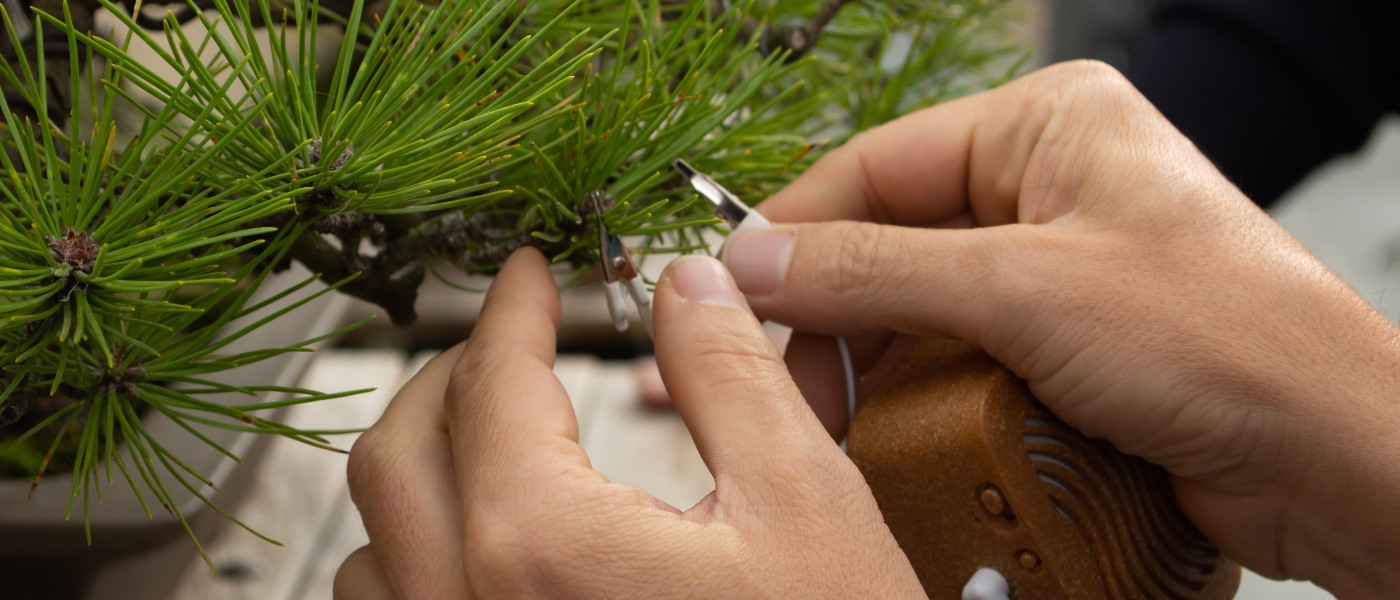Composer Ricardo Romaneiro on Biophony SoundGarden
Biophony SoundGarden, running February 11–12 in the Steinhardt Conservatory, was created by composer Ricardo Romaneiro with Metropolis Ensemble, a nonprofit organization founded by the conductor Andrew Cyr.
Conceived as an immersive soundbath experience, the event will feature unique soundscapes punctuated by plant-generated musical devices, all interwoven with live musical performances, a chromotherapy-inspired light installation, and sounds meant to stimulate certain brainwaves.
We spoke with Romaneiro about the genesis of Biophony SoundGarden, composing for soundbaths, and what it’s like to make music with plants.
What inspired this event?
Andrew Cyr from the Metropolis Ensemble contacted me. He was like, “Hey, I have this series with Brooklyn Botanic Garden called Biophony. What are you working on right now?” And I told him that I’ve been doing a lot of sound healing and immersive experiences. I’d also been writing meditation music for apps during Covid, and working with PlantWave devices that translate plant frequencies into sound. And he was like, “Hmm, can we do something with this?”
It ended up working out perfectly, and he found the most creative musicians to do it with. They needed to be not just musicians that play, but musicians that feel, and who can can blend, create, and improvise within a soundscape. They needed to be able to play with the plants in a duet, in a way.
Had you experienced gardens as an inspirational artistic space before doing this project?
Definitely. I created a live orchestra and wellness experience at the Vizcaya Museum & Gardens in Miami with Nu Deco Ensemble, where we created a live score for an immersive yoga experience surrounded by nature and gardens. I am very inspired by nature. Being in a meditative state in nature is what the ideal condition is. Sometimes when you do a soundbath, you’re in a meditation room, and it’s so hard to take people out of their bodies to go somewhere. So being able to bring this experience into a conservatory is just priceless.
What is a PlantWave device, and how are you using it for Biophony?
When you first walk into the Trail of Plant Evolution, there are plants connected to devices that translate their minute internal variations—like the movement of water—into sound.
When you water a plant, for example, there are really small changes inside of the plant. When the plant is connected to a PlantWave device, the software amplifies that and makes it dramatic. We create parameters for the sound so it’s reacting within a certain musical key that fits in with the broader composition. So it’s not crazy notes flying everywhere!
Inside the different conservatories, each gardener picked a plant that we then attached to a PlantWave. Lenny Paul, foreman of the conservatories, and the rest of the Horticulture team have been unbelievably helpful in guiding our work with the plants.
How did each space, and the plants in those spaces, inform the music?
I’ve been visiting every Friday leading up to the show to feel it out. In the Desert Pavilion, for example, I’ve created something that has a very dry sound, with little flutters here and there, almost emulating wind or sand particles.
I have different soundscapes for all of the Conservatory spaces, and different musicians playing in each space. But they’re all working within the same structure and form, so they’re synchronized and connected. When you open the doors, sounds are flowing into one another.
How is the process of composing an experiential soundbath different from other types of musical composition?
It’s drastically different. In a soundbath, you want listeners to go into a meditative state where they transcend time. So you really have to create a piece that is not linear. It can’t come in the form of a beginning, middle, climax, end. And one of the biggest differences is the absence of melodies. You have to think about something that’s really cyclical—there’s movement, but everything flows with each other.
What’s rewarding for you about creating experiences like this?
It’s almost like the work itself is the reward. I feel so fulfilled by it—the interaction with musicians, multidisciplinary artists, gardeners, lighting designers, it inspires you and moves you and it changes you. I grow from all the collaborations.


